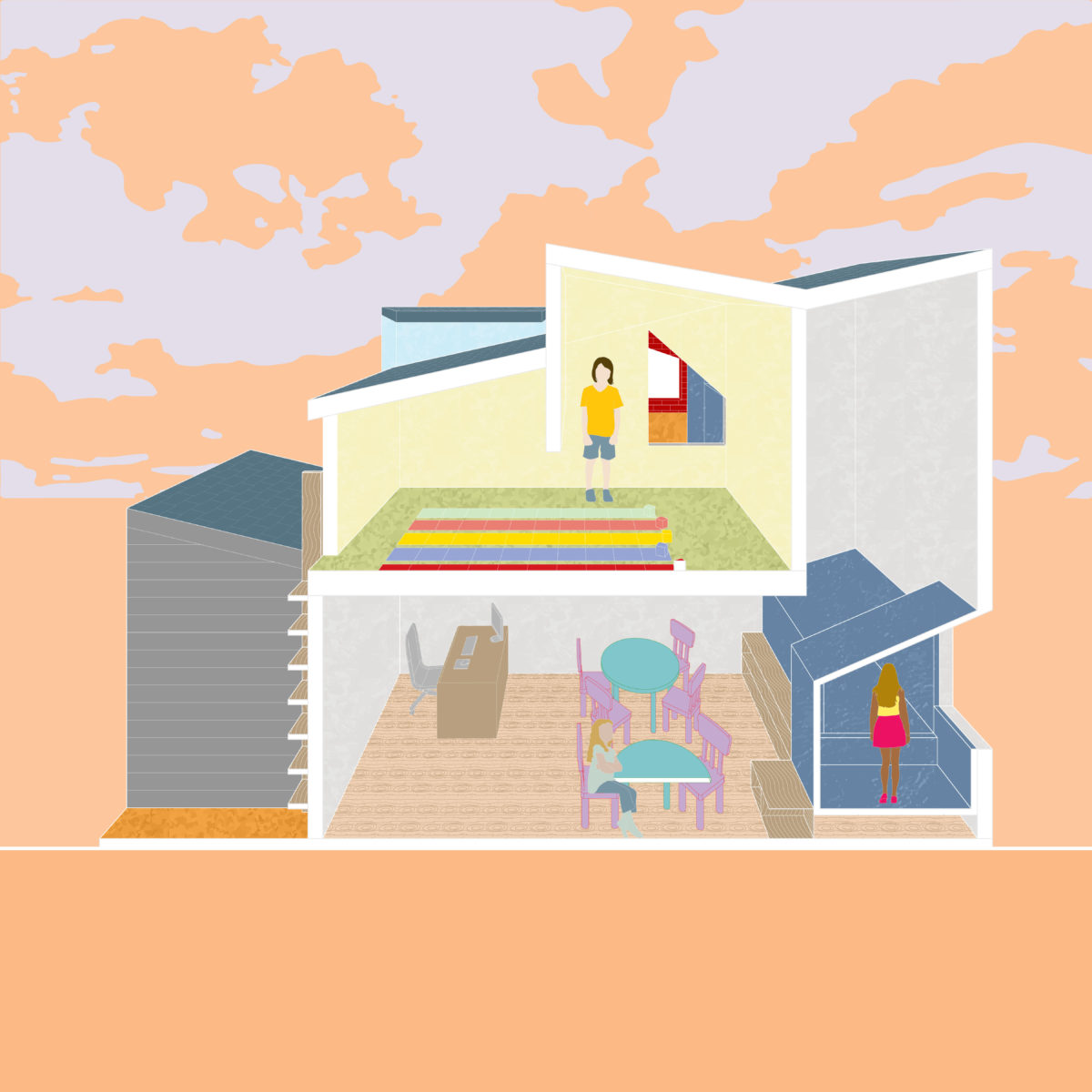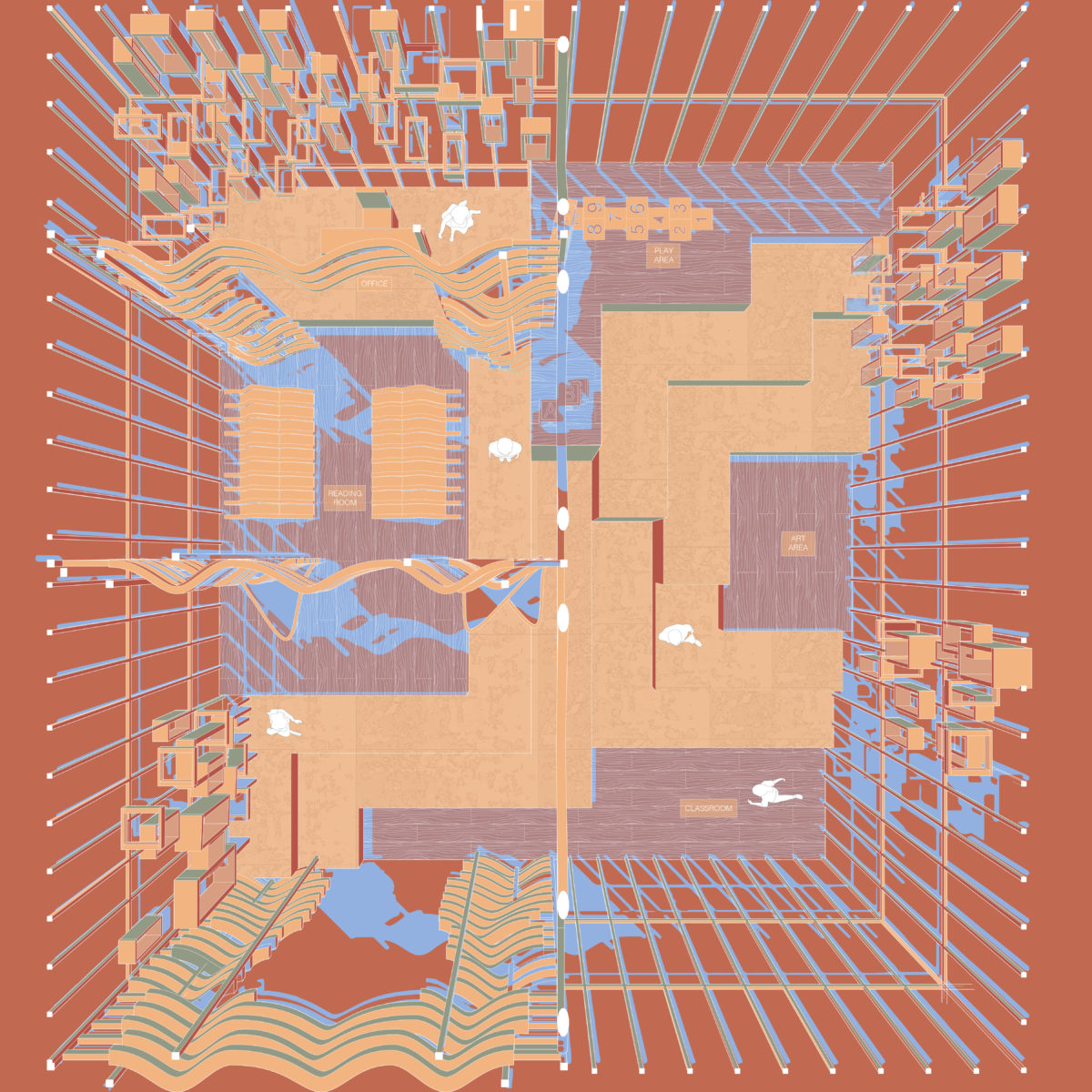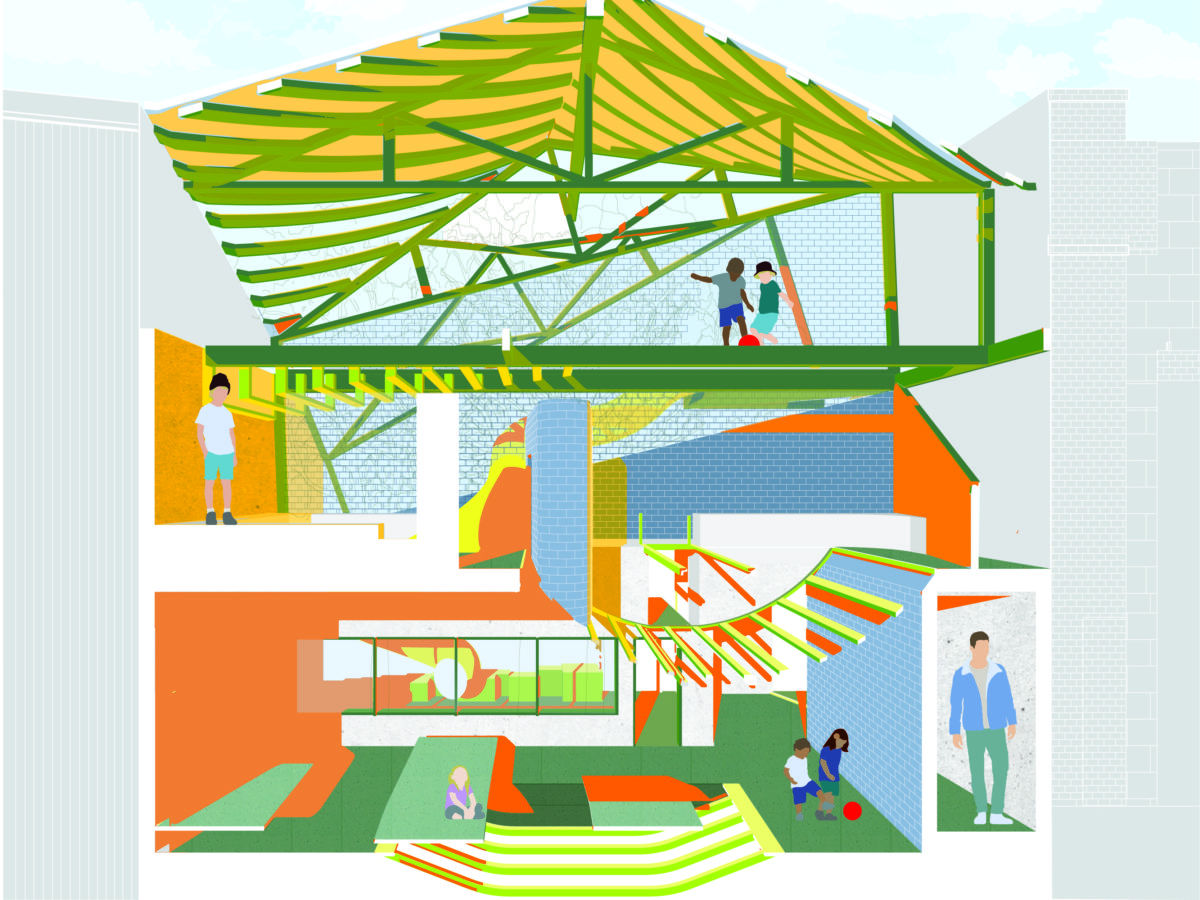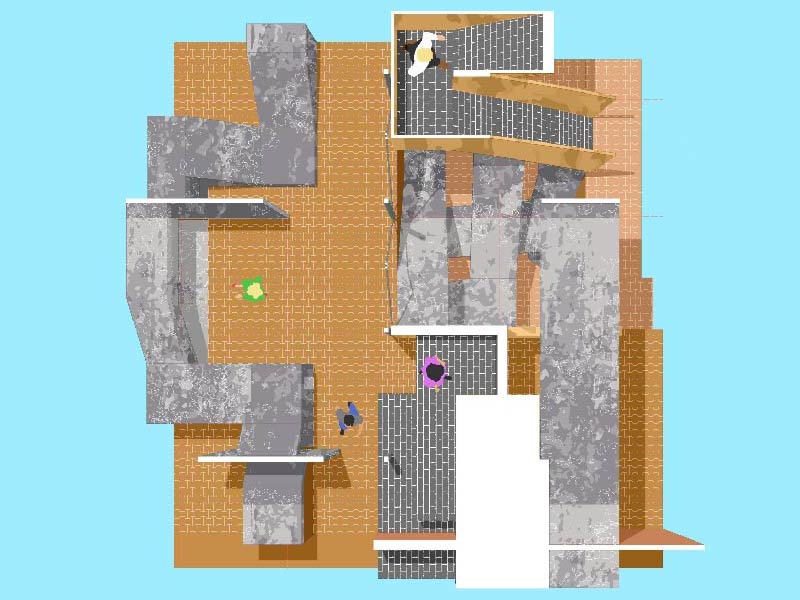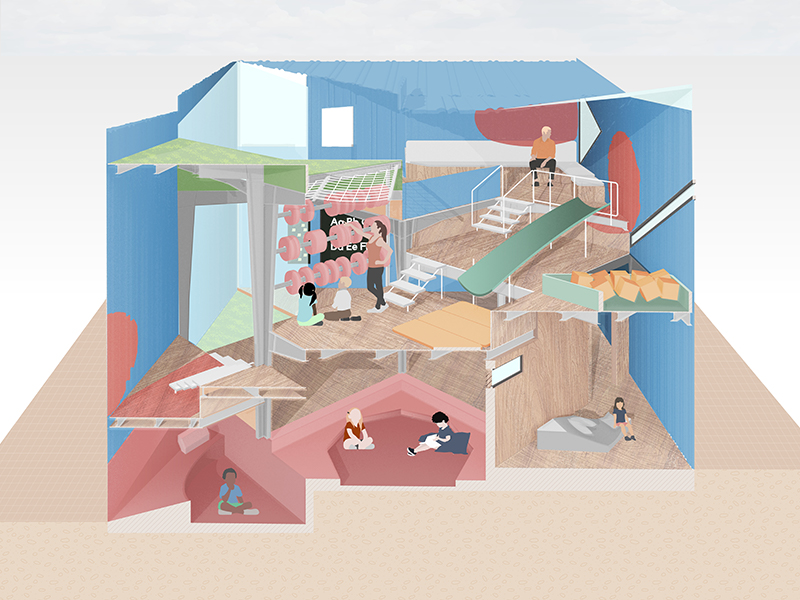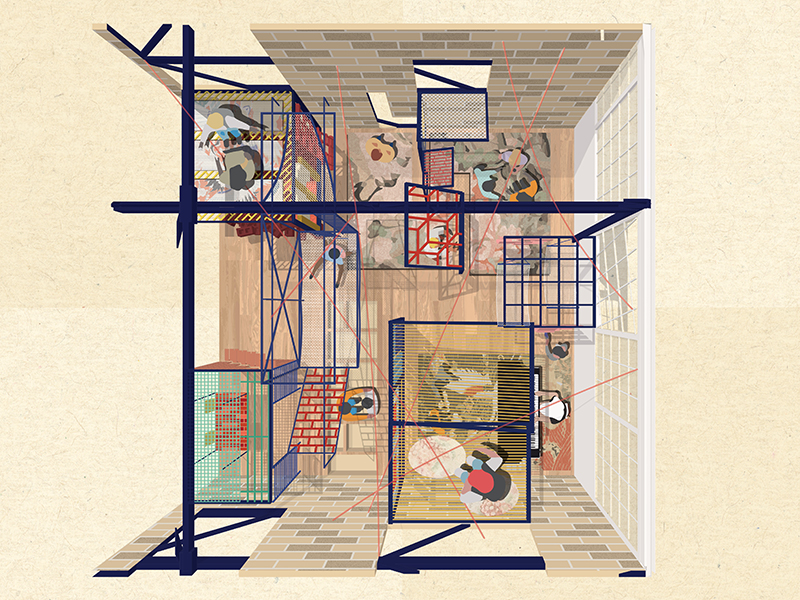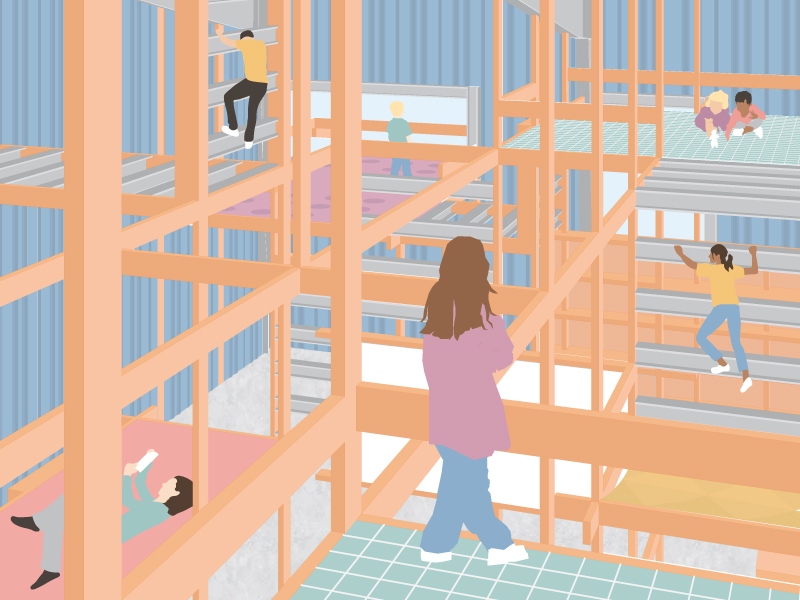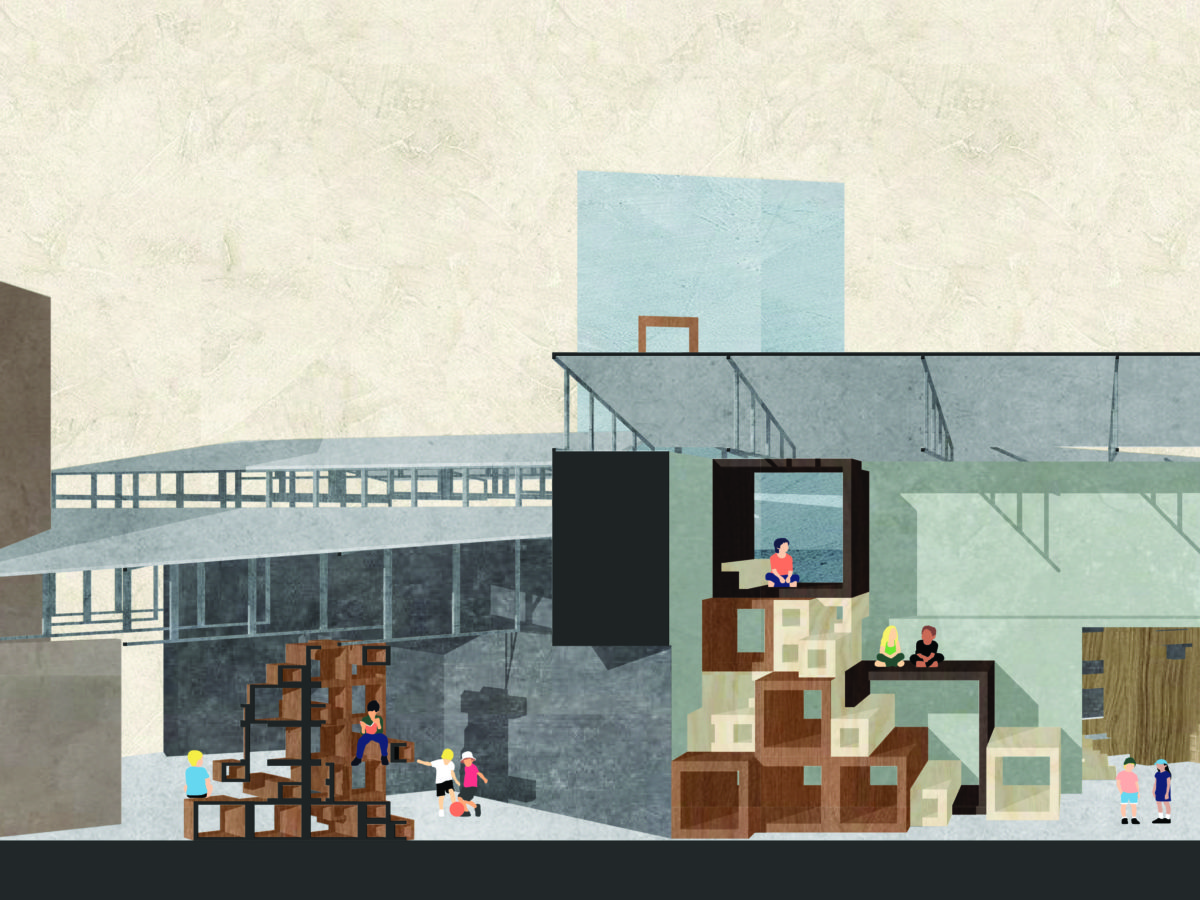I began this semester by analyzing the Petal House, focusing on the idea of opening up roof structures through rotations and manipulation of density and porosity in different parts of the house.
Through unrolling, hinging, and rotations, I wanted to create a kindergarten that stimulated spatial awareness with a focus on programmatic flexibility and dis-programming. Each element in the shed such as the walls or trusses are delaminated and geometrically manipulated through shifting, turning, extruding, such that each acts a system of their own and engender different activities and spatial configurations.
When the panels are locked in their open position, the facade dissolves and the ‘interior space’ of the classroom expands to the common area. When classes are not being held, opening these members create a permeable space that transforms the whole kindergarten to ‘play.’
Further, parts of the bow-truss and walls are cut out and hinged to create platforms, playground, and rest area while undergoing material transformation. As such, characteristics inherent in these materials paired with varied programmatic configurations allows the students to learn in a tactile and exploratory school environment.
